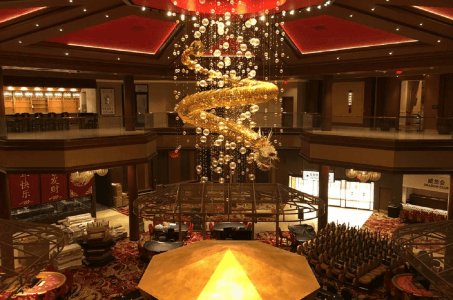After Earnings Miss, Analyst Defends Las Vegas Sands Stock, Sees Assets as ‘Undervalued’
Posted on: July 25, 2019, 11:46h.
Last updated on: July 26, 2019, 08:12h.
Las Vegas Sands Corp. (NYSE:LVS) stock slid Thursday and at one point traded lower by 5.3 percent after the company delivered slack second-quarter earnings, disappointment that was largely attributable to softness in the company’s Macau business.

In a report out after the close of US markets Wednesday, Sands said it earned 72 cents a share in the April through June quarter, below the 78 cents Wall Street was expecting. The company’s Macau unit, Sands China, posted earnings before interest, depreciation and amortization (EBITDA) of $765 million on revenue of $2.14 billion, below analysts’ forecasts of EBITDA of $788 million on revenue of $2.15 billion.
Despite the Macau misses, Macquarie analyst Chad Beynon remains bullish on LVS shares. In a note out Thursday, he reiterated an “outperform” rating and $73 price target on the stock, implying upside of about 16 percent from where the stock resides at this writing.
While REITs are spending 12-15x for Gaming rents, LVS has market-leading assets in the most desirable destinations in the world, which we find to be undervalued given the consistent free cash flow (FCF), committed Capex and relationships with local government,” said Beynon in the note.
In simpler terms, the analyst is saying real estate investment trusts (REITs) are paying lofty multiples for desirable gaming properties and markets may not be fully appreciating the value of Sands’ venues, which the company owns outright.
The Long View
Las Vegas Sands disappointed investors with its second-quarter results, but Beynon suggests they take a longer view of the stock and look beyond this year and 2020.
“With $5 billion of committed capital for Singapore and Macau, we think investors should look past 2019/2020 when growth is projected to be <5% and consider future returns on these investments,” the analyst said.
Even with Sands’ second-quarter profit miss, Beynon boosted his 2019 earnings forecast to $4.09 per share from $3.29, noting that while Macau and Singapore EBITDA disappointed in the April through June period, Sands’ Las Vegas EBITDA surprised to the upside thanks to strength among VIP gamblers. In order, Macau, Singapore and Las Vegas are the biggest drivers of EBITDA and revenue for LVS.
In Singapore, the company is expected to spend $3.3 billion over the next several years expanding the Marina Bay Sands. Beynon expects revenue there to decline 3 percent this year before increasing by 4 percent in 2020.
Other Markets
In Macau, LVS experienced a .5 percent year-over-year decline in gross gaming revenue (GGR) in the second quarter, but the company’s mass market table win surged 5.2 percent. Beynon sees LVS posting Macau GGR growth of four percent this year and five percent in 2020.
With some Strip operators citing bad baccarat luck as a reason for recent GGR weakness there, Sands stood out in the second quarter as its baccarat drop at the Palazzo and Venetian soared nearly 127 percent to $299 million through the end of May. LVS’s slot win for April and May was up 5.3 percent, outpacing the industry average of a 1 percent increase, according to Beynon.
The analyst predicts 7 percent GGR growth for LVS in its home city this year and 1 percent growth next year.
Related News Articles
Portugal’s Online Gaming Industry Registers Growth of Almost 9 Percent
Boyd Gaming Q2 Earnings Mixed, Analysts Remain Bullish
Most Popular
Mirage Las Vegas Demolition to Start Next Week, Atrium a Goner
Where All the Mirage Relics Will Go
Most Commented
-
Bally’s Facing Five Months of Daily Demolition for Chicago Casino
— June 18, 2024 — 12 Comments
















No comments yet